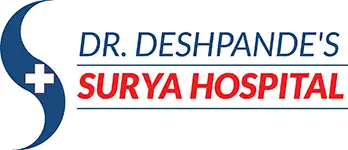Pile commonly known as haemorrhoids, is a problem that is shared by so many people. It induces pain, itching, and haemorrhage in the anus. People ask if surgery may not be needed in the treatment of this condition. In doing this, we will go through all the non-surgical solutions for piles and find out the effectiveness of these methods.
Lifestyle and diet changes
Lifestyle and diet are very important factors of piles. Eating a high-fibre diet as well as drinking a lot of water can help stop constipation, and it is a common reason for piles. Besides, avoiding protracted sitting or standing is helpful in relieving pressure in our anal region. Regular exercises play a major role in maintaining bowel movement.
Medications
Over-the-counter medicines available there come in many varieties. Creams or ointments containing medication have a soothing effect when they are applied to the infected area. They help to reduce itching and pain by restricting the pain messengers that are the root cause of pain. Sustaining releases of drugs such as Tranexamic acid or Mesalamine in the tables are primary in reducing bleeding and inflammation. In addition, anti-inflammatory drugs make for better symptomatic relief.
Infrared coagulation
Another treatment is the cryolipolysis office procedure. Some sort of device is applied which uses infrared light beams to melt the piles. An open cavity during surgery can rapidly increase the pile size. Surgical intervention takes place in an outpatient setting with a minimally invasive approach and no pain is expected. Countless periods of class might be required to ensure long-term healing.
Sclerotherapy
This method involves injecting an agent right into the piles and they will be compressed and hardened. The heaps after a while become dry and disintegrate. This short-term office procedure is done under local anaesthesia that eradicates the pain sensation in a few minutes. This also manages to treat the majority of the cases in the early stage of haemorrhoids.
Rubber band ligation
In this discomfort-free technique, locked bands are used to cut off blood flow to the piles inside the body. Finally, the pieces shrink, peel off, and both the piles and the bands fall off automatically. Amongst non-surgical procedures, this type of procedure being done in the Outpatient Department of the hospital is an effective treatment of piles that is available for grades 1 and 2.
Conclusion
Many times, piles can be successfully treated without surgery as in the cases of lifestyle changes and non-surgical options such as medications, infrared coagulation, sclerotherapy and rubber band ligation. Surgery would be performed only on the piles that do not respond to any non-surgical treatment if it was in advanced stages or if they were recurring piles. A healthier lifestyle approach with an experienced piles doctor can maximize the success of piles treatment in patients without a need for surgery.








